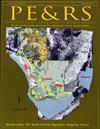Examining the Integration of Landsat Operational Land Imager with Sentinel-1 and Vegetation Indices in Mapping Southern Yellow Pines (Loblolly, Shortleaf, and Virginia Pines)
IF 2
4区 地球科学
Q4 GEOGRAPHY, PHYSICAL
引用次数: 0
Abstract
The mapping of southern yellow pines (loblolly, shortleaf, and Virginia pines) is important to supporting forest inventory and the management of forest resources. The overall aim of this study was to examine the integration of Landsat Operational Land Imager (OLI ) optical data with Sentinel-1 microwave C-band satellite data and vegetation indices in mapping the canopy cover of southern yellow pines. Specifically, this study assessed the overall mapping accuracies of the canopy cover classification of southern yellow pines derived using four data-integration scenarios: Landsat OLI alone; Landsat OLI and Sentinel-1; Landsat OLI with vegetation indices derived from satellite data—normalized difference vegetation index, soil-adjusted vegetation index, modified soil-adjusted vegetation index, transformed soil-adjusted vegetation index, and infrared percentage vegetation index; and 4) Landsat OLI with Sentinel-1 and vegetation indices. The results showed that the integration of Landsat OLI reflectance bands with Sentinel-1 backscattering coefficients and vegetation indices yielded the best overall classification accuracy, about 77%, and standalone Landsat OLI the weakest accuracy, approximately 67%. The findings in this study demonstrate that the addition of backscattering coefficients from Sentinel-1 and vegetation indices positively contributed to the mapping of southern yellow pines.基于Sentinel-1和植被指数的Landsat业务陆地成像仪在南方黄松(火炬松、短叶松和维吉尼亚松)制图中的集成研究
南方黄松(火炬松、短叶松和维吉尼亚松)的制图对支持森林清查和森林资源管理具有重要意义。本研究的总体目的是研究将Landsat Operational Land Imager (OLI)光学数据与Sentinel-1微波c波段卫星数据和植被指数相结合在南方黄松冠层覆盖制图中的应用。具体而言,本研究评估了使用四种数据集成方案得出的南方黄松冠层覆盖分类的总体制图精度:单独使用Landsat OLI;陆地卫星OLI和哨兵1号;采用归一化植被指数、土壤调整植被指数、修正土壤调整植被指数、转化土壤调整植被指数、红外植被百分比指数等反演植被指数的Landsat OLI;4)基于Sentinel-1和植被指数的Landsat OLI。结果表明,基于Sentinel-1后向散射系数和植被指数的Landsat OLI综合分类精度最高,约为77%,而独立的Landsat OLI分类精度最低,约为67%。研究结果表明,Sentinel-1的后向散射系数和植被指数的加入对南方黄松的制图有积极的促进作用。
本文章由计算机程序翻译,如有差异,请以英文原文为准。
求助全文
约1分钟内获得全文
求助全文
来源期刊

Photogrammetric Engineering and Remote Sensing
地学-成像科学与照相技术
CiteScore
1.70
自引率
15.40%
发文量
89
审稿时长
9 months
期刊介绍:
Photogrammetric Engineering & Remote Sensing commonly referred to as PE&RS, is the official journal of imaging and geospatial information science and technology. Included in the journal on a regular basis are highlight articles such as the popular columns “Grids & Datums” and “Mapping Matters” and peer reviewed technical papers.
We publish thousands of documents, reports, codes, and informational articles in and about the industries relating to Geospatial Sciences, Remote Sensing, Photogrammetry and other imaging sciences.
 求助内容:
求助内容: 应助结果提醒方式:
应助结果提醒方式:


